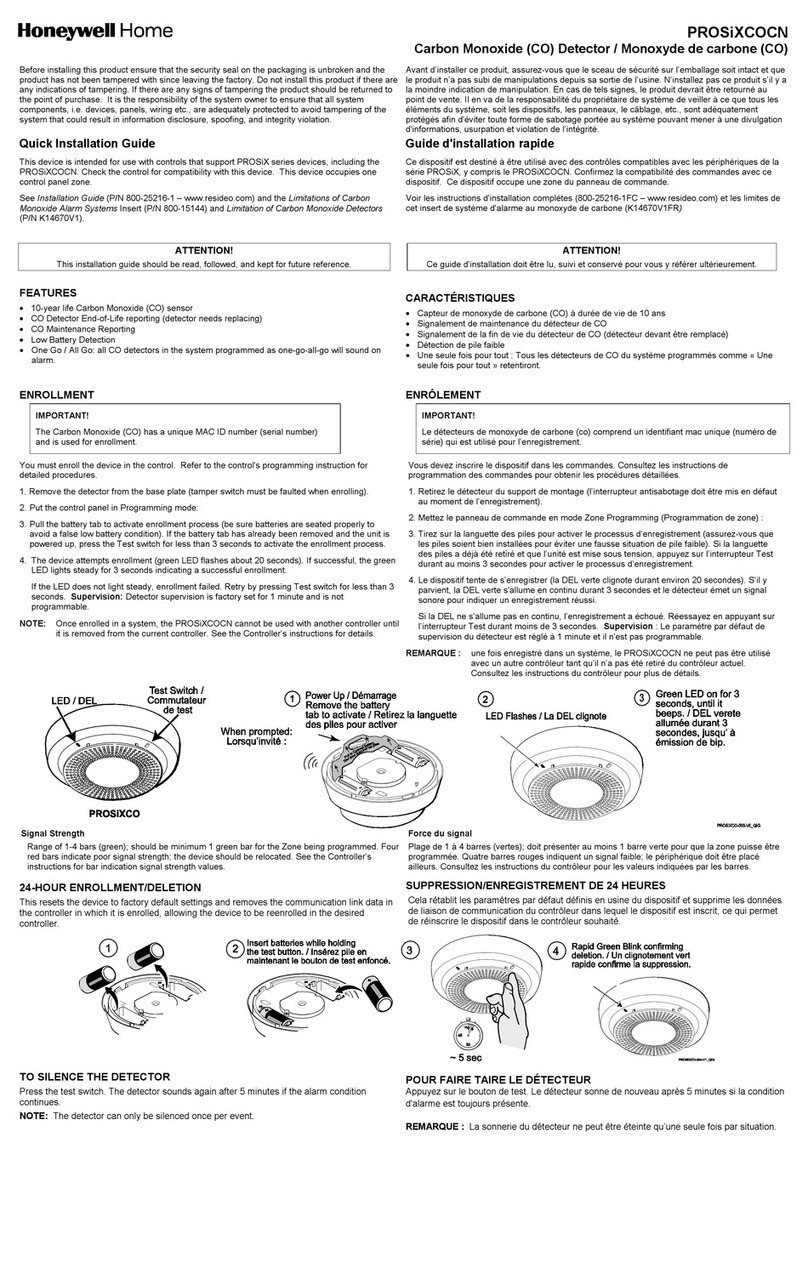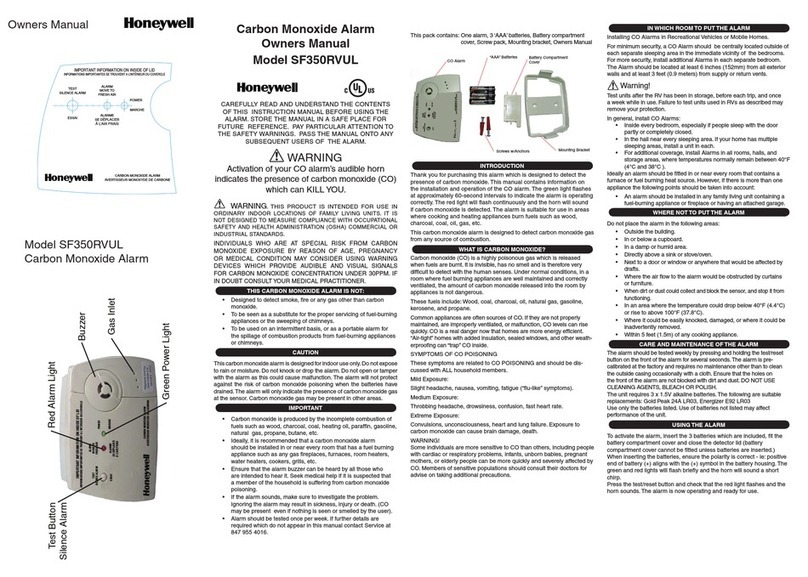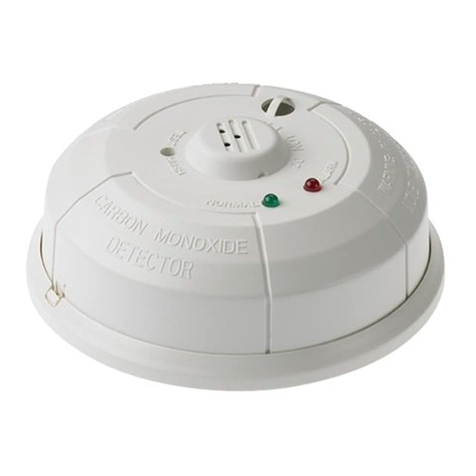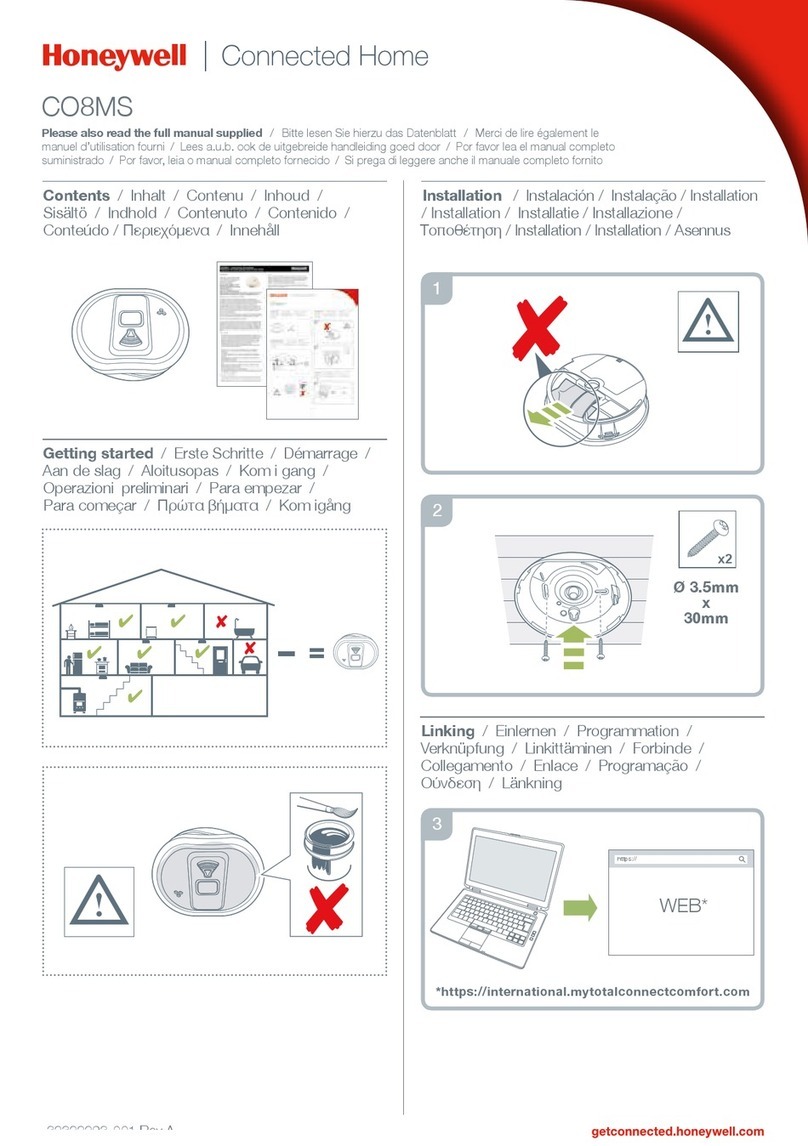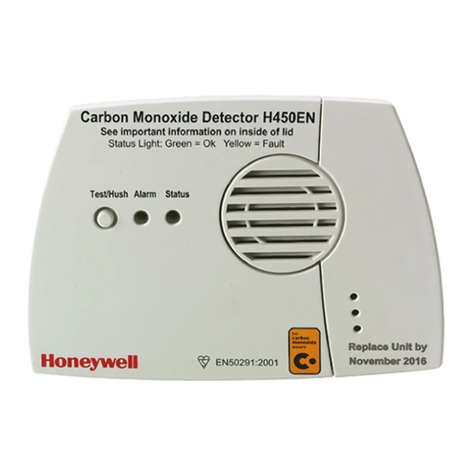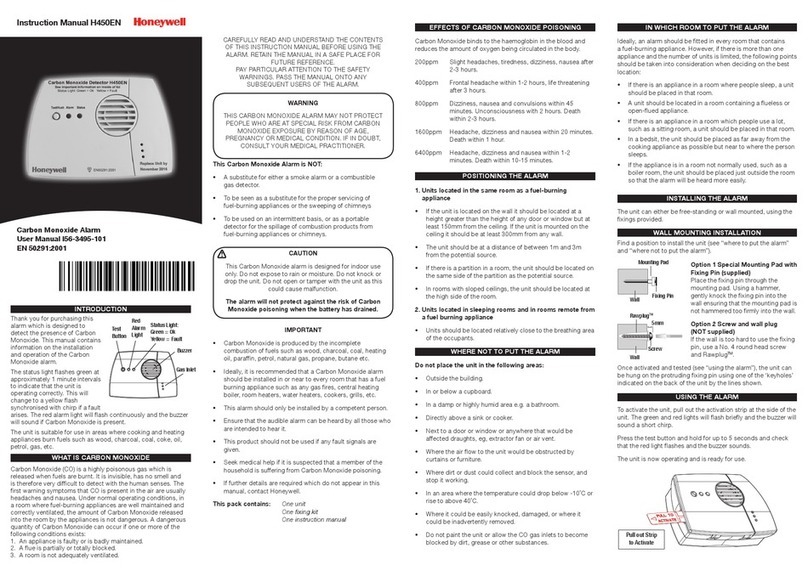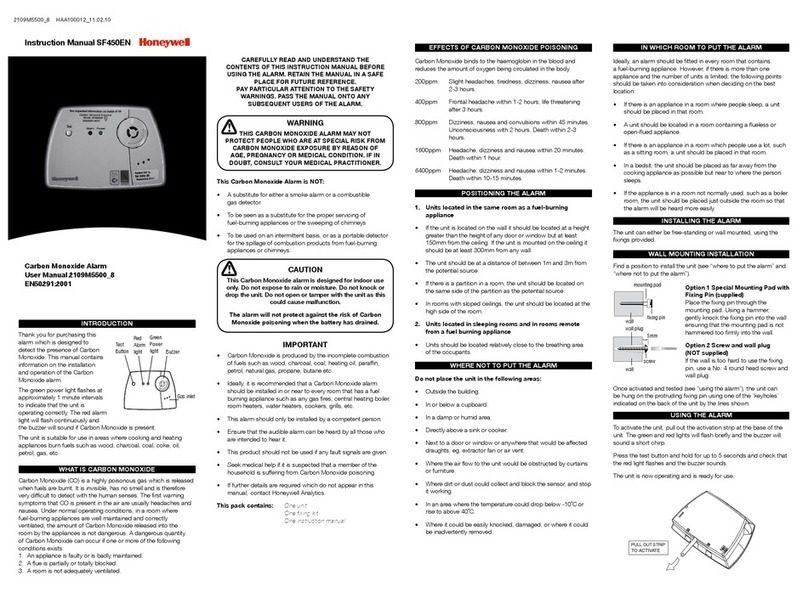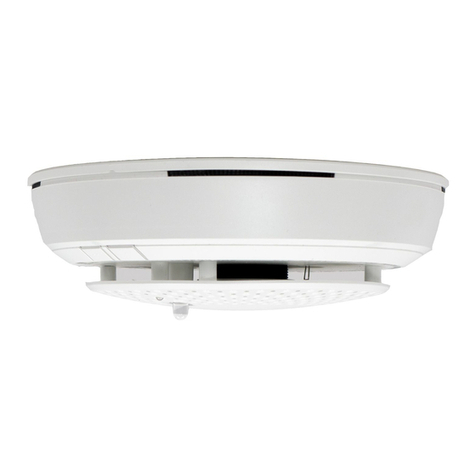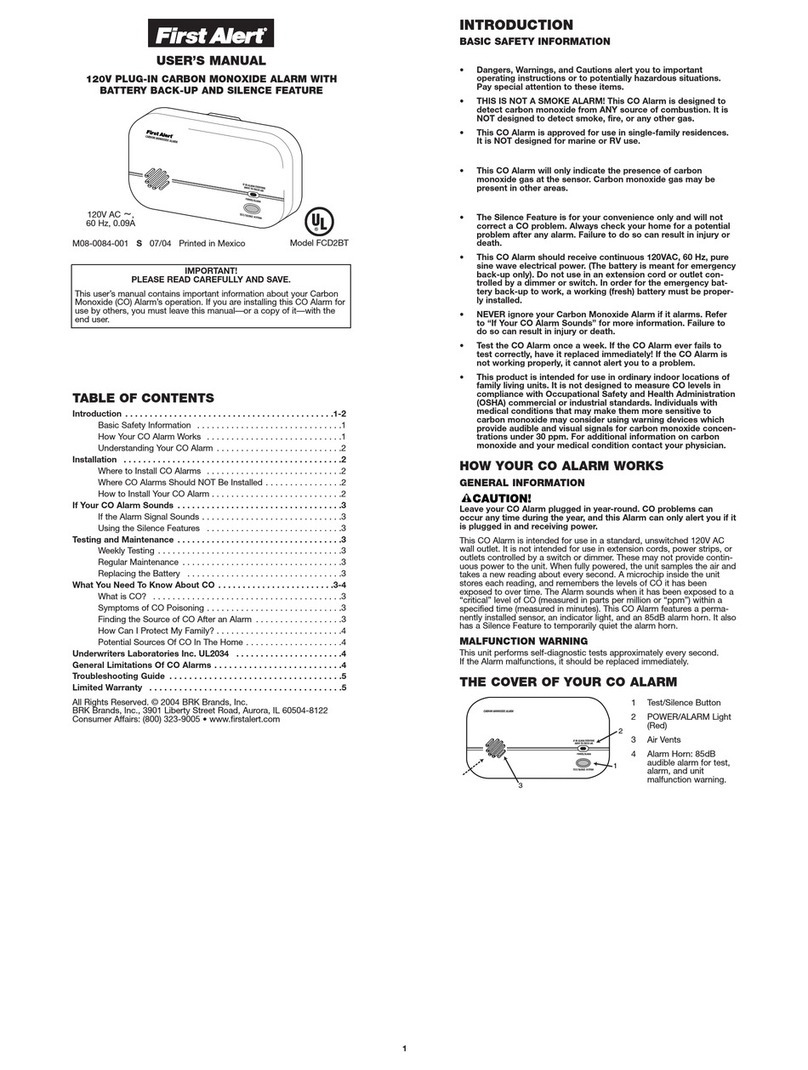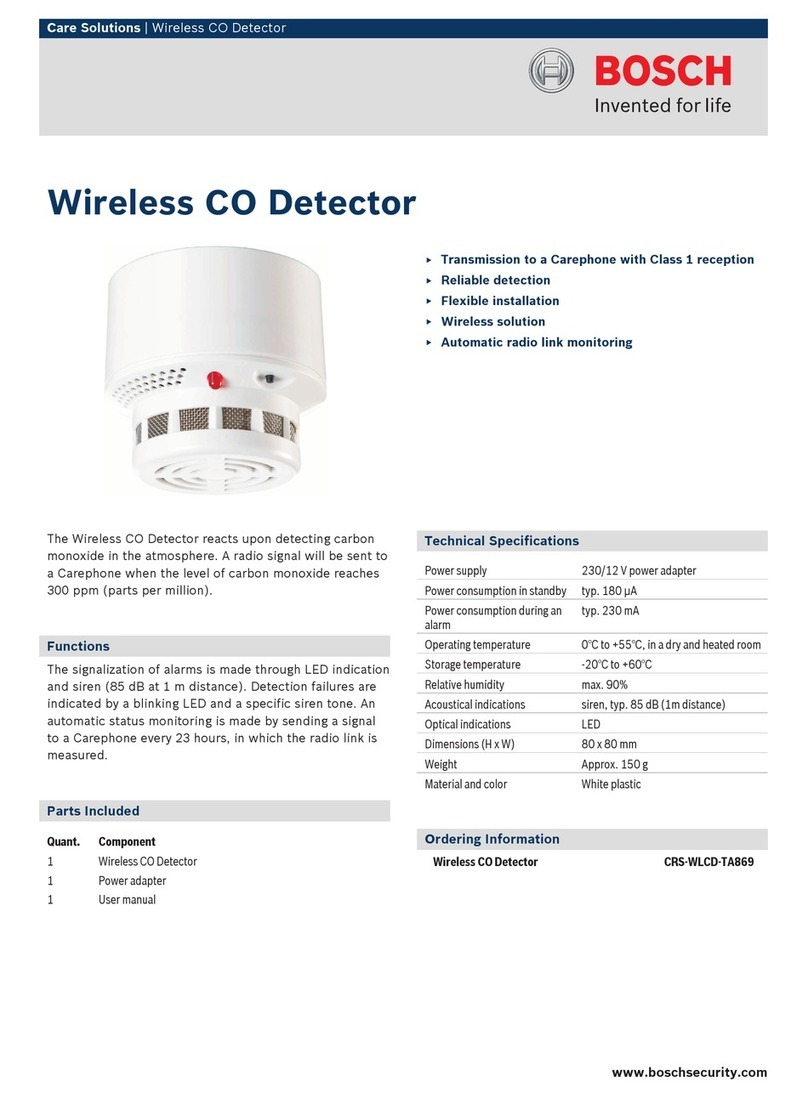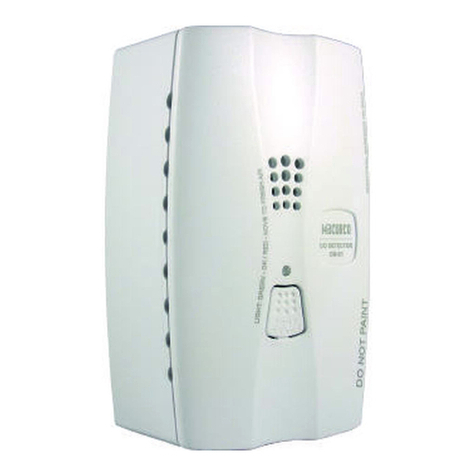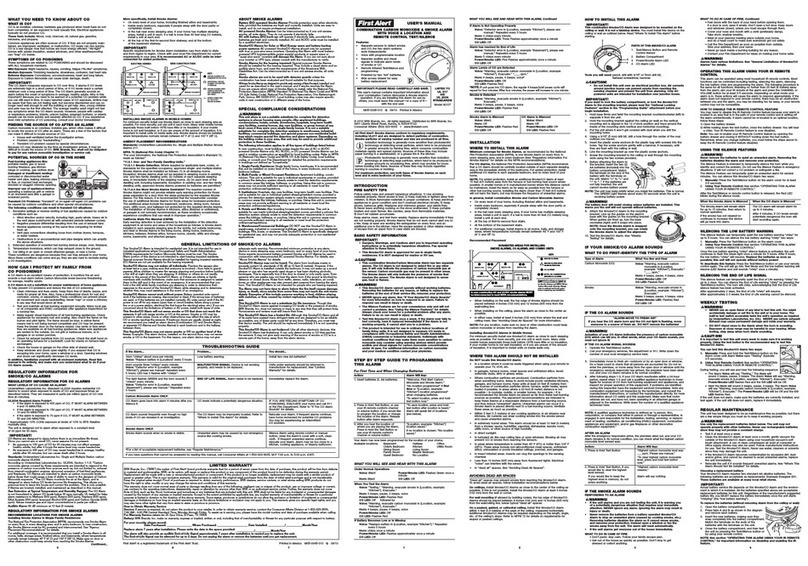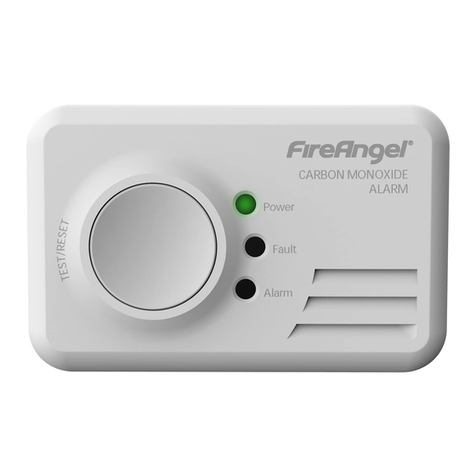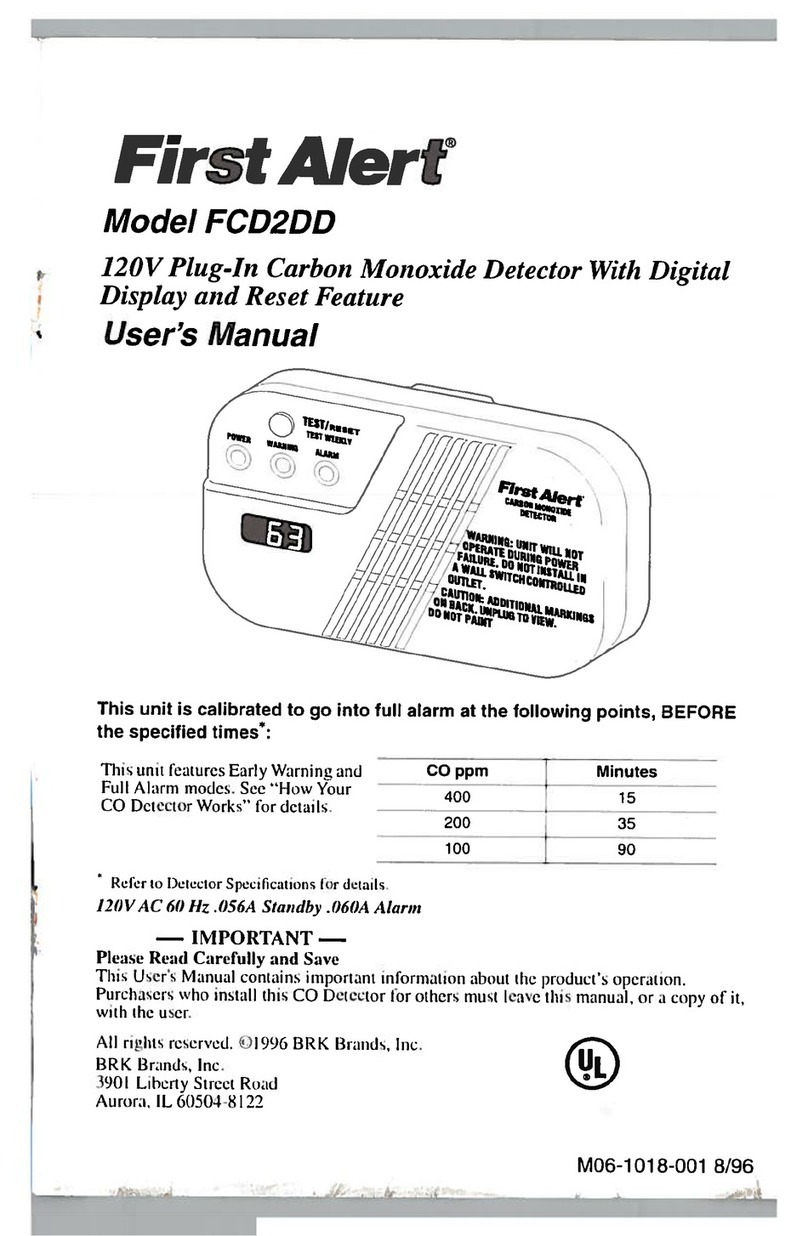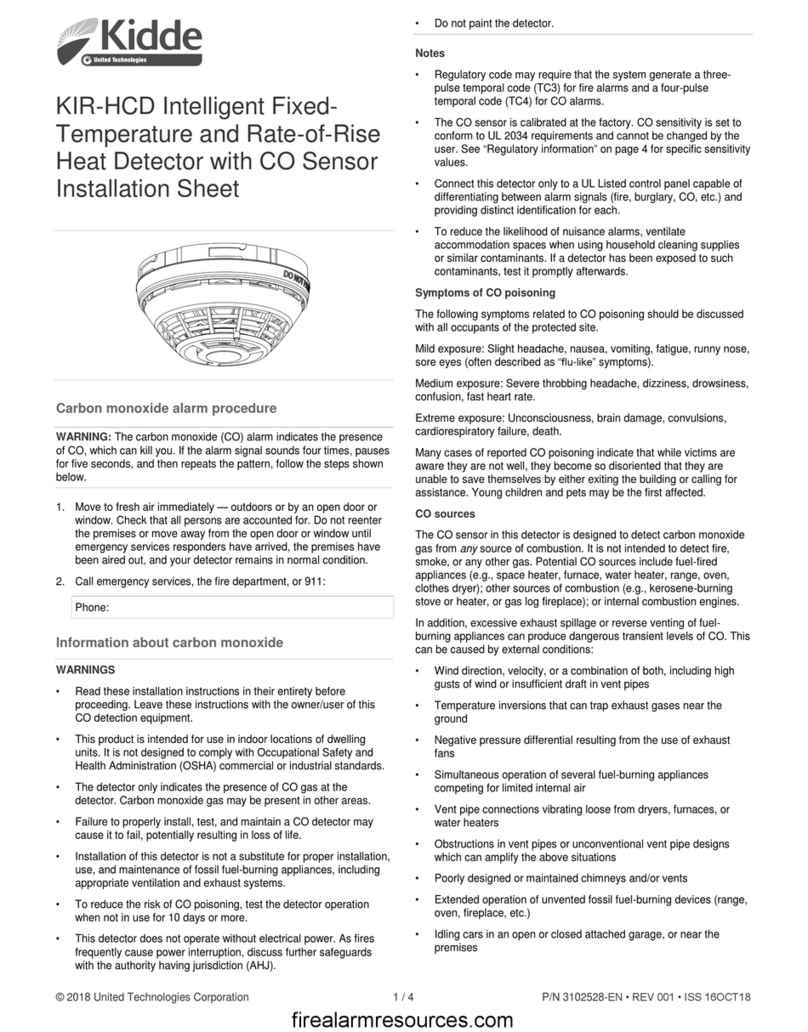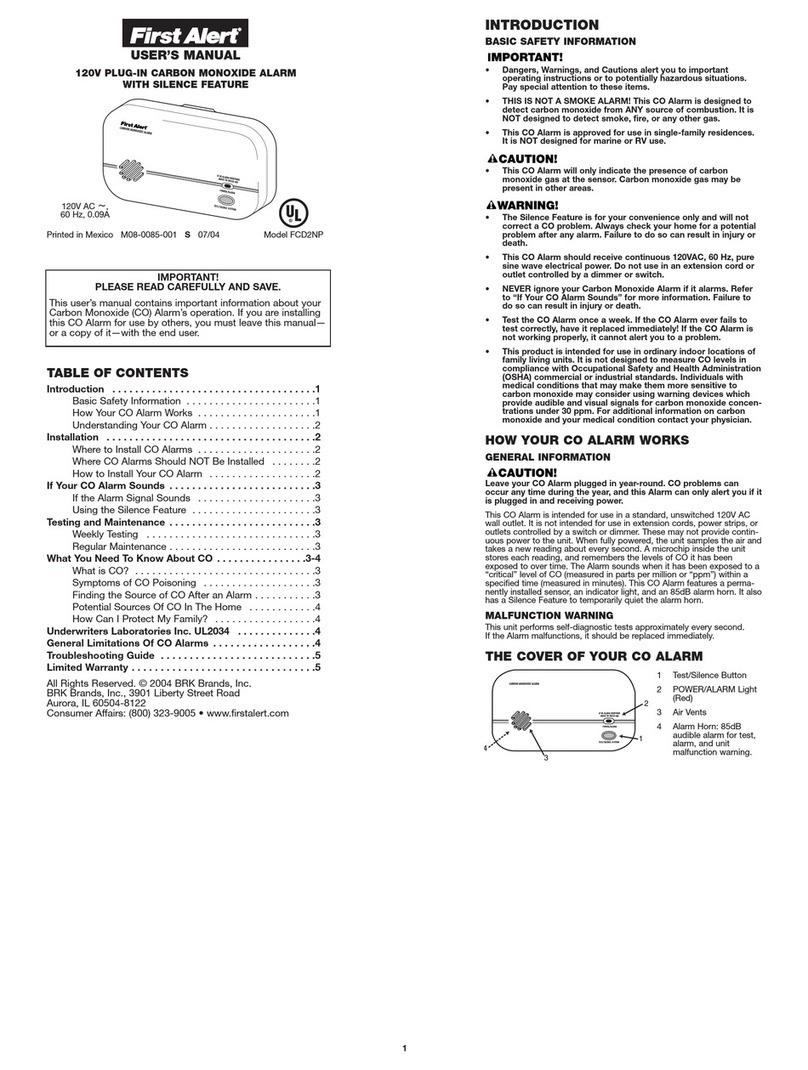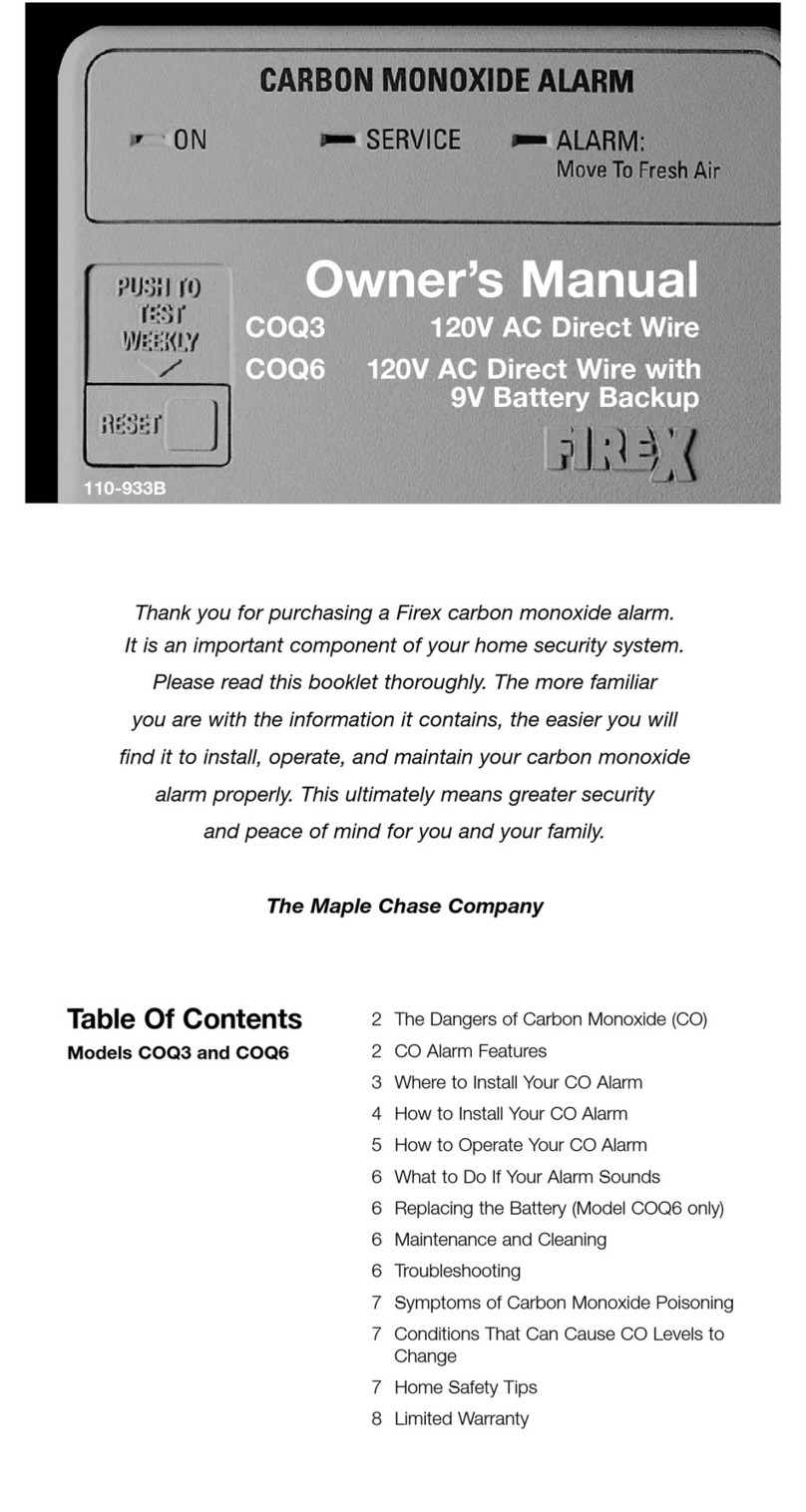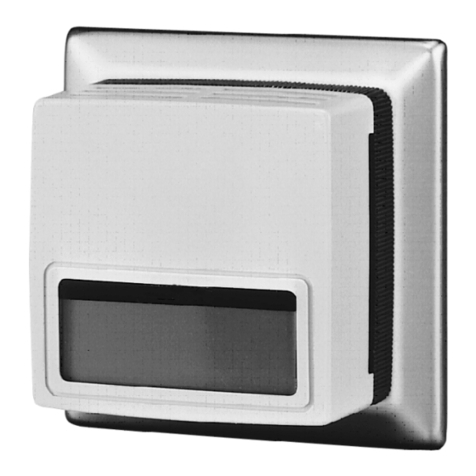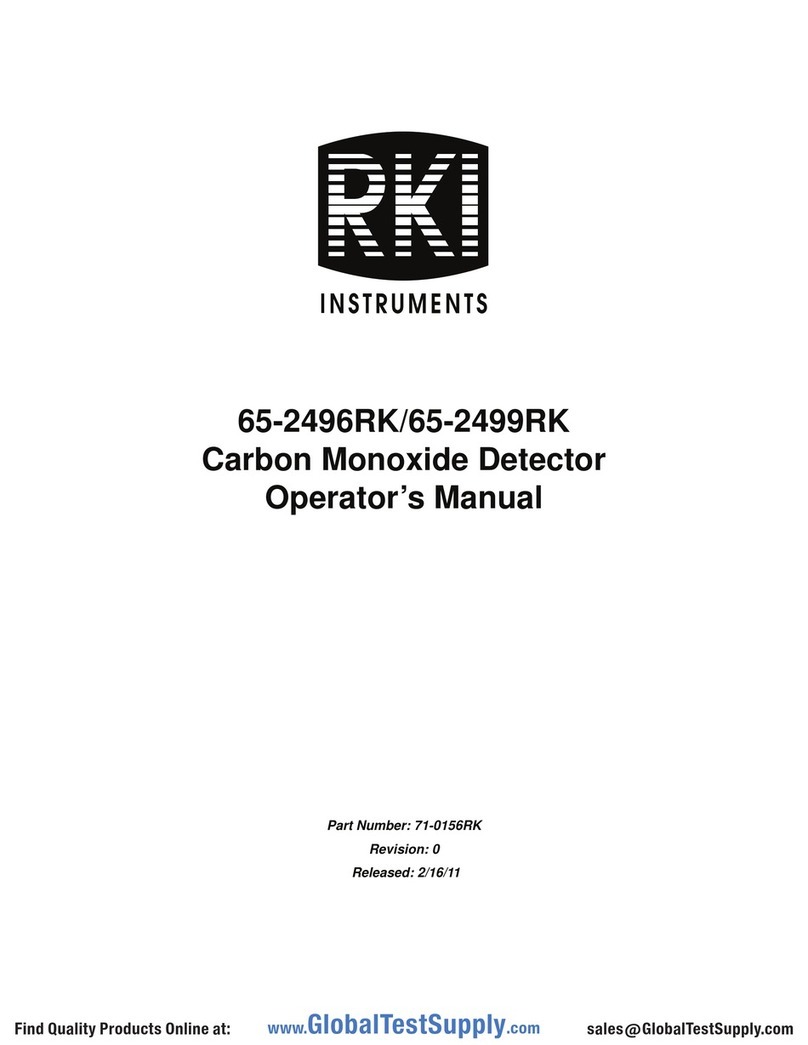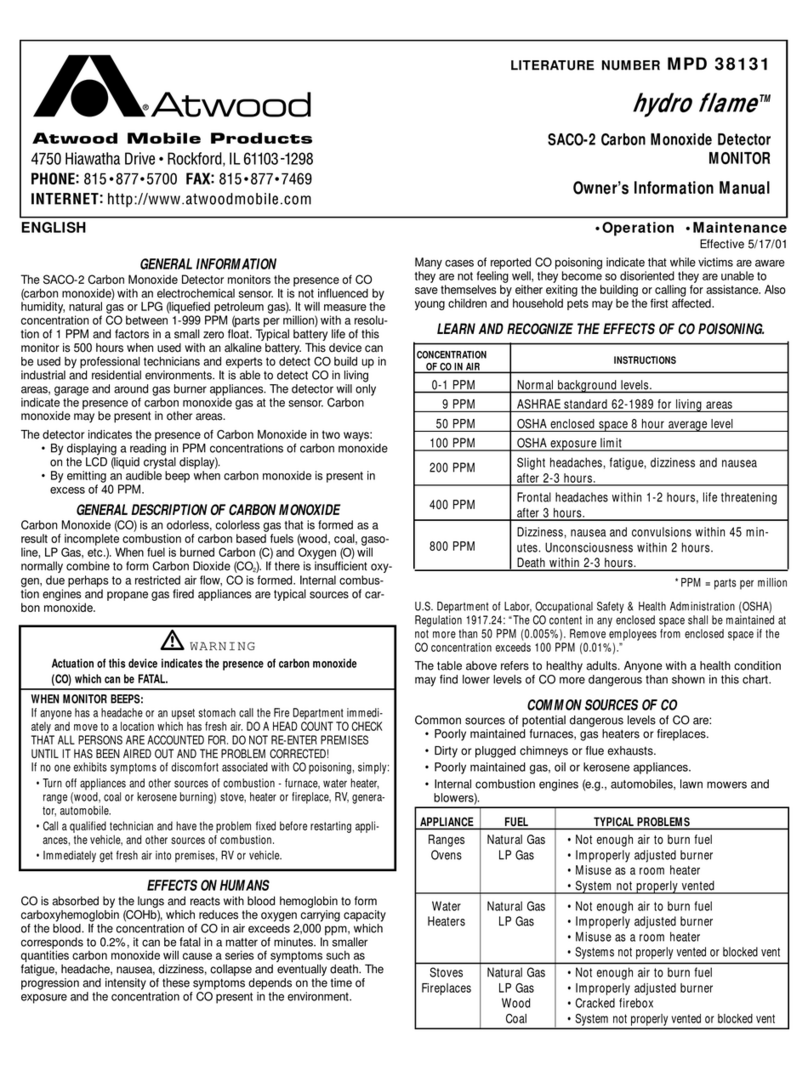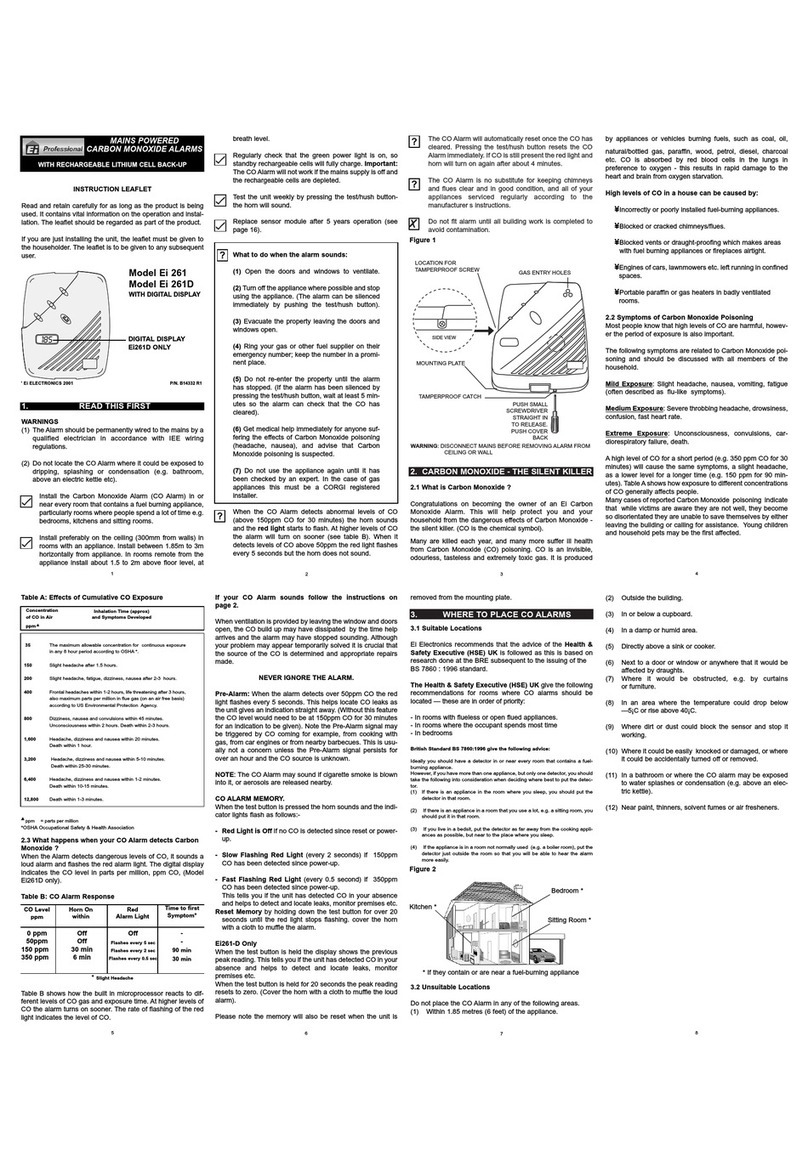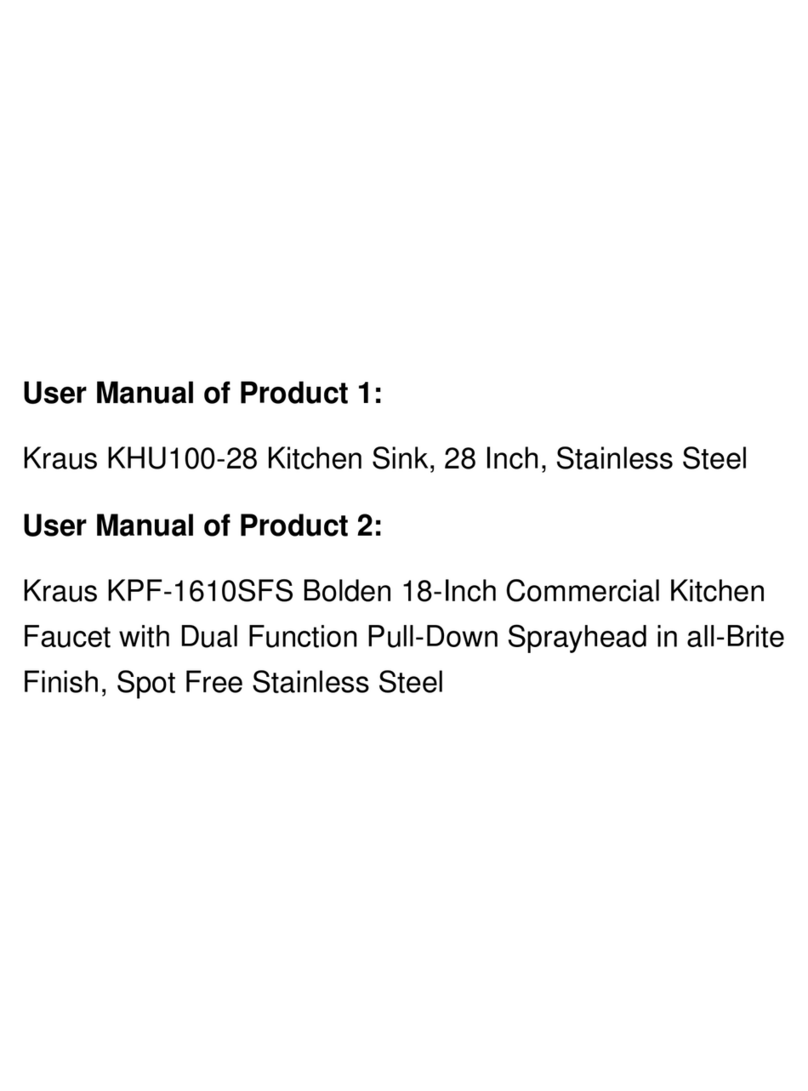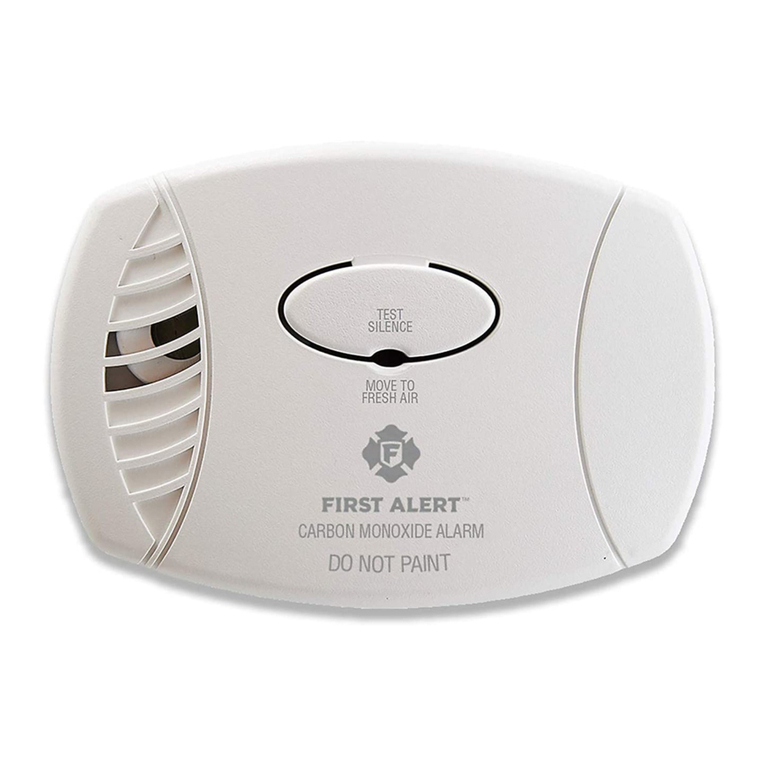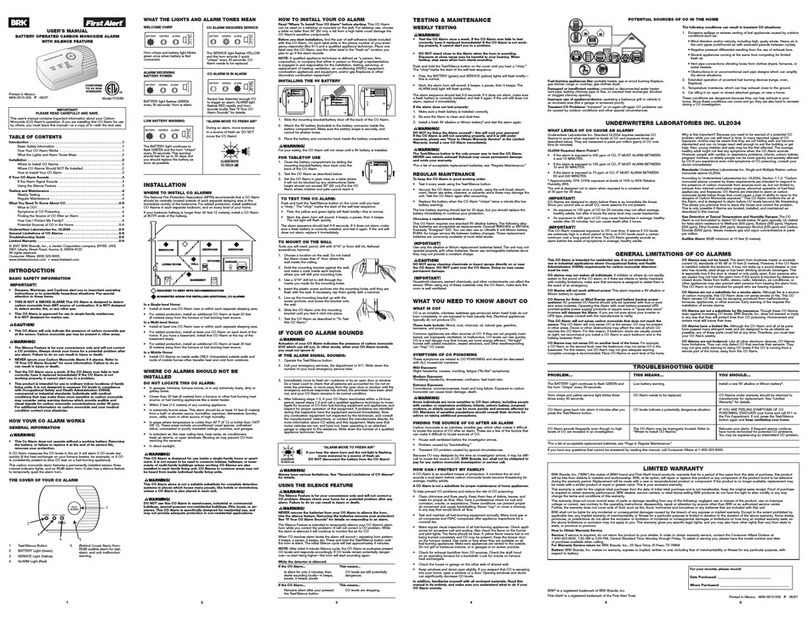
CAUTION: Carbon Monoxide Gas and its Detection
This carbon monoxide detector is designed for indoor use only. Do not
expose to rain or moisture. Do not knock or drop the detector. Do not
open or tamper with the detector as this could cause malfunction. The
detector will not protect against the risk of carbon monoxide
poisoning if not properly installed. The detector will only indicate the
presence of carbon monoxide gas at the sensor.
Carbon monoxide gas may be present in other areas.
This carbon monoxide detector is NOT:
• Designed to detect smoke, fire or any gas other than carbon
monoxide
• To be seen as a substitute for the proper servicing of fuel-burning
appliances or the sweeping of chimneys.
• To be used on an intermittent basis, or as a portable alarm for the
spillage of combustion products from fuel-burning appliances or
chimneys.
Carbon monoxide gas is a highly poisonous gas which is released
when fuels are burned. It is invisible, has no smell and is therefore
impossible to detect with the human senses. Under normal conditions
in a room where fuel burning appliances are well maintained and
correctly ventilated, the amount of carbon monoxide released into the
room by appliances should not be dangerous.
Symptoms of carbon monoxide poisoning: Carbon monoxide
bonds to the hemoglobin in the blood and reduces the amount of
oxygen being circulated in the body. The following symptoms are
related to carbon monoxide poisoning and should be discussed with
all members of the household:
Mild exposure: Slight headache, nausea, vomiting, fatigue (often
described as “flu-like” symptoms).
Medium exposure: Sever throbbing headache, drowsiness, confusion,
fast heart rate.
Extreme exposure: Unconsciousness, convulsions, cardio respiratory
failure, death.
Many causes of reported carbon monoxide poisoning indicate that
while victims are aware that they are not well, they become so
disoriented that they are unable to save themselves by either exiting
the building or calling for assistance.
Also young children and pets may be the first to be affected.
!
WARNING: IMPORTANT INFORMATION FOR THE USER
Actuation of your CO alarm indicates the presence of carbon
monoxide (CO), which can cause injury or death.
Individuals with medical problems may consider using warning
devices which provide audible and visual signals for carbon monoxide
concentrations under 30ppm.
What to do if the carbon monoxide detector goes into alarm:
1. Push the Hush/Test button. If the detector reactivates or the
detector does not silence, continue with step 2.
2. Immediately move to fresh air, outdoors or by an open window.
Check that all persons are accounted for. Do not reenter the
premises nor move away from the open door/window until
emergency service responders have arrived.
3. Call your local fire department from a phone in an area where the
air is safe.
4. If your detector reactivates within a 24-hour period, repeat steps
1-3 and call a qualified appliance technician to investigate for
sources of CO from fuel burning equipment and appliances, and
inspect for proper operation of this equipment. If problems are
identified during this inspection, have the equipment serviced
immediately. Note any combustion equipment not inspected by
the technician and consult the manufacturer’s instructions, or
contact the manufacturers directly, for more information about
CO safety and this equipment. Make sure that motor vehicles are
not, and have not been, operating in an attached garage or
adjacent to the residence.
IMPORTANT: This detector should be tested and maintained
regularly following National Fire Protection Association (NFPA) 720
requirements. (Generally this detector should be tested at least once
per month.)
MAINTENANCE
Occasionally clean the outside casing with a cloth. Ensure that the
holes on the front of the alarm are not blocked with dirt and dust.
Do not paint, and do not use cleaning agents, bleach, or polish
on the detector.
DETECTOR REPLACEMENT
This detector is manufactured with a long-life carbon monoxide
sensor. Over time the sensor will lose sensitivity, and will need to be
replaced with a new carbon monoxide detector. This detector’s
lifespan is approximately six years from the date of manufacture.
The user should periodically check the detector’s replacement date.
Remove the detector from its base and check the replacement date
label on the underside of the detector. The label indicates the date
that the detector should be replaced.
NOTE: When the detector is removed from its base, a message is sent
to the central station. If the system is armed, a tamper alarm
message is sent; if disarmed, a trouble message is sent.
The detector will also cause a trouble condition once it has reached
the end of its useful life. If this occurs, it is time to replace the
detector.
NOTE: Before replacing the detector, notify the proper authorities
that maintenance is being performed and the system will be
temporarily out of service. Disable the zone or system undergoing
maintenance to prevent any unwanted alarms. Dispose of detector in
accordance with any local regulations.
CAUTION
It should be noted the installation, operation, testing and
maintenance of the 5800CO is different than smoke detectors. Per
NFPA 720 section 5.3.7.2 the detector shall not be connected to a zone
that signals a fire condition (i.e. smoke detector zones). Therefore, the
5800CO detector must be programmed as a non-fire zone. See the
control’s Installation Instructions for the appropriate carbon
monoxide zone type to be programmed.
SPECIFICATIONS
Power Source: One 3-volt CR123A Lithium Battery
(included). (Replace with Duracell
DL123A, Panasonic CR123A or
ADEMCO 466.)
Audible Signal (temp 4 tone): 85 dBA min. in alarm (at 10ft)
Height: 2.3 inches (58 mm)
Diameter: 5.3 inches (135 mm) with mounting
base
Weight: 7 oz. (241 g) without battery
Operating Ambient
Temperature Range: 32° to 100°F (0° to 37.8°C)
Operating Humidity Range: 15% to 95% Relative Humidity, non-
condensing
Agency Listings: UL standard 2075
Patent numbers: 5,155,469; 5,004,999; 7,120,795
Please see insert for Limitations of Carbon Monoxide Detectors.
FOR WARRANTY INFORMATION AND FOR DETAILS REGARDING
THE LIMITATIONS OF THE ENTIRE ALARM SYSTEM, GO TO:
www.honeywell.com/security/hsc/resources/wa
ÊK14631V1*Š
K14631V1 4/08 Rev. A
2 Corporate Center Drive, Suite 100
P.O. Box 9040, Melville, NY 11747
Copyright © 2007 Honeywell International Inc.
www.security.honeywell.com


